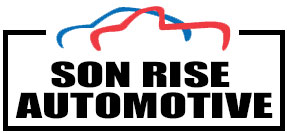Frequently Asked Questions
Here are some questions and answers that help describe common issues that customers frequently ask. Periodically, your car should have a thorough inspection by a qualified technician. Here are a few tips from our Service team.
Antifreeze should be replaced every two years due to oxidation and deterioration of important additives. These additives lubricate the water pump and protect metal parts from rust and oxidation. They also help keep coolant hoses soft and flexible. Today we can recycle and clean old antifreeze, replacing the additives.
Antifreeze is very toxic and not environmentally friendly so recycling makes good sense. The engine’s thermostat should also be replaced every 2 years to keep the engine operating temperatures in the proper range.
Front wheel drive cars and 4 wheel drives use flexible axle shafts with Constant Velocity joints or CV’s for short. The CV joints allow the axle shafts to spin the front wheels while moving up or down over bumps or turning corners.
The CV joint has a protective rubber boot that keeps grease for lubrication in, and dirt and water out. When the rubber boot breaks the CV joint loses grease and starts to “click,” especially during cornering.
The broken boot should be replaced as soon as it is noticed to help avoid costly repairs.
Summer outings should be enjoyable and not spent in a roadside repair shop with someone named Gomer under the hood.
Have your car serviced and fluid levels checked before any long road trip and don’t forget the windshield washers and wipers. Radiator hoses and fan belts are one of the main causes for breakdowns. Hoses deteriorate from the inside out so looks can be deceiving.
Wheel bearings should be packed and correct tire pressures will give a smoother ride and better fuel economy.
A little preventative maintenance can help insure you won’t get to know Gomer.
Your car’s engine makes enough heat to destroy itself so a cooling system is needed. Antifreeze mixed with water at a 50/50 ratio provides freeze and boiling protection. Too much antifreeze can cause heat transfer problems which can result in overheating.
If you experience overheating, turn the a/c off and the heater on to help remove heat from the coolant. If the engine temperature light comes on or the gauge goes into the red zone, the engine should be turned off quickly and allowed to cool down to avoid costly engine damage.
Plain water will start a rust process that is almost impossible to stop. Rust particles deteriorate the entire cooling system, water pump, radiator, hoses, thermostat etc.
Yes if you have a major system failure. Freon makes your car’s air conditioning system work–it’s nasty stuff as far as the ozone layer is concerned. Production of Freon has been ceased in the US.
There are substitutes that require conversions and are rather costly. If your a/c system is going to require an overhaul, you may be asked to consider changing to a new substance. The question is, “convert or not convert”?
The general industry consensus is to convert, for several reasons. Environmental and cost are the 2 main reasons. The old R12 Freon is still available and can be used until the supply is gone which could be several more years but it is getting expensive.
The newer refrigerant is called R134a and will not be quite as efficient as the old stuff but will work very well even in our desert environment.
Most of today’s engines use timing belts, and are an important preventative maintenance item. In yesteryear they were made of metal and called timing chains. As engines became smaller and lighter, rubber belts replaced the heavier chains that had to be lubricated. The belt deteriorates with heat and age and lasts about 60,000 miles or 5 years although some makes have increased the life expectancy.
The timing belt’s job is to keep moving parts, primarily valves and pistons, in time with one another. If the timing belt is not replaced, it will eventually break, leaving you stranded, and on some models causing further engine damage which can be extremely expensive to repair.
Yes, often a little bump like that gets forgotten, especially if the car handles the same.
Today’s cars are lighter with fewer and smaller suspension components and therefore less forgiving. If damage goes unnoticed, new tires may be needed. Look closely at the tread for uneven wear patterns or bald spots.
Checking tire pressures helps tires last longer, improves handling and fuel economy. It’s important to set tire pressures at or just below the maximum rating on the tire.
While most brake squeal is normal, it is always best to have the noise checked out by a professional.
Brake squeal is the result of high-pitched vibration of the brake pads. This vibration occurs because the pads are not properly insulated from the caliper. Pads usually come equipped with anti-rattle clips, insulator shims and sometimes come with a silicone backing that literally glues the pad to the caliper to keep the pads secure and help prevent rattle or vibrations. Sometimes brake squeal is the result of the brake pads being to hard. These smooth, hard surfaces rub against each other resulting in the squeal.
If this is the case, replacing the pads and resurfacing the rotors should stop the squeal.
The average driver uses their brakes 75,000 times per year and takes for granted that they’ll work every time.
Today’s brake systems are hydraulic and use brake fluid which is hydrophilic, meaning it can absorb moisture from the air. Once the hydraulic system has moisture in it, corrosion takes place and brake components fail. Brake fluid should be flushed periodically to keep corrosion under control. This procedure is not expensive and is included in many preventative maintenance schedules.
Brake fluid should be handled with care. It will melt plastics and remove paint.

